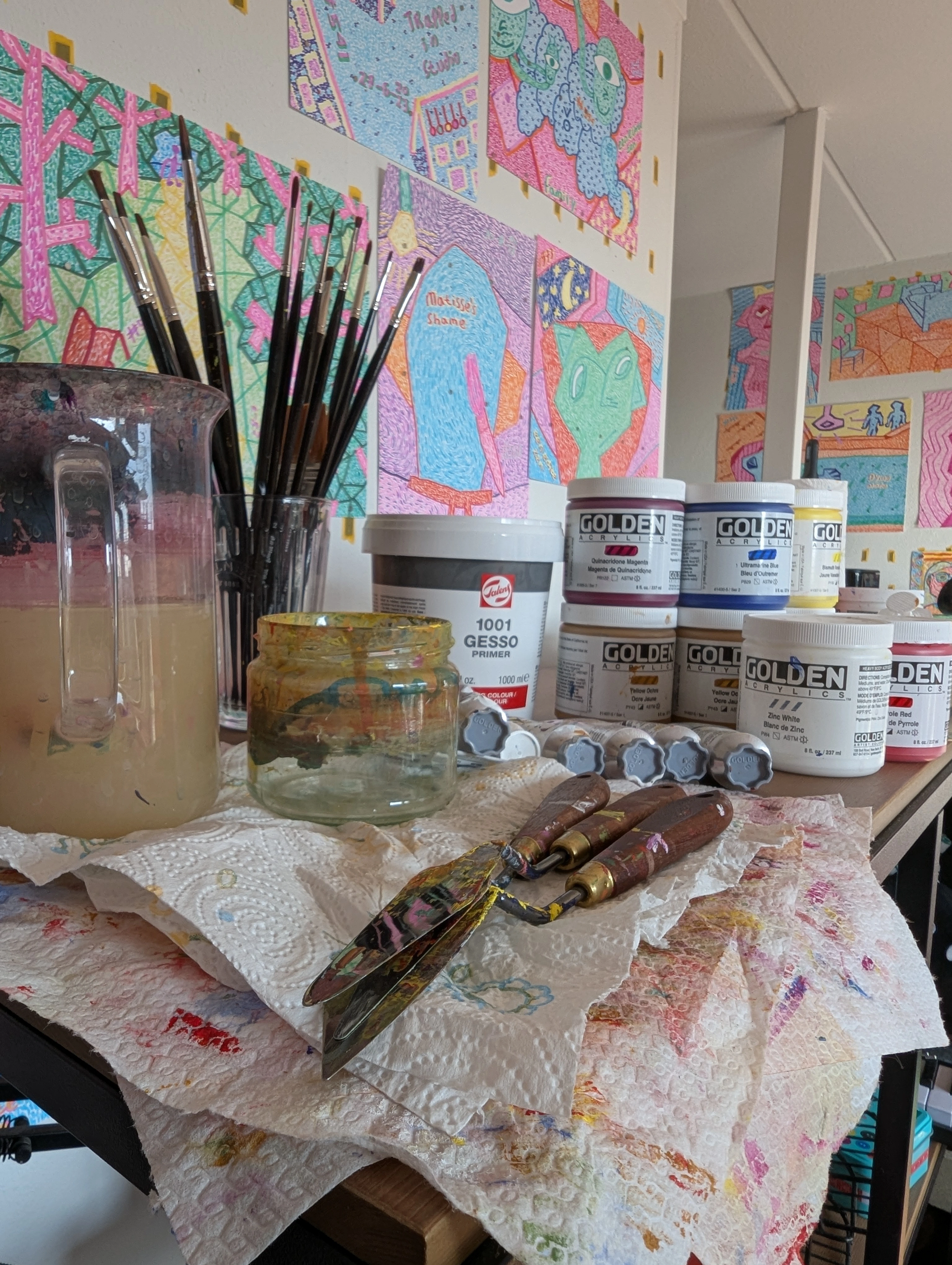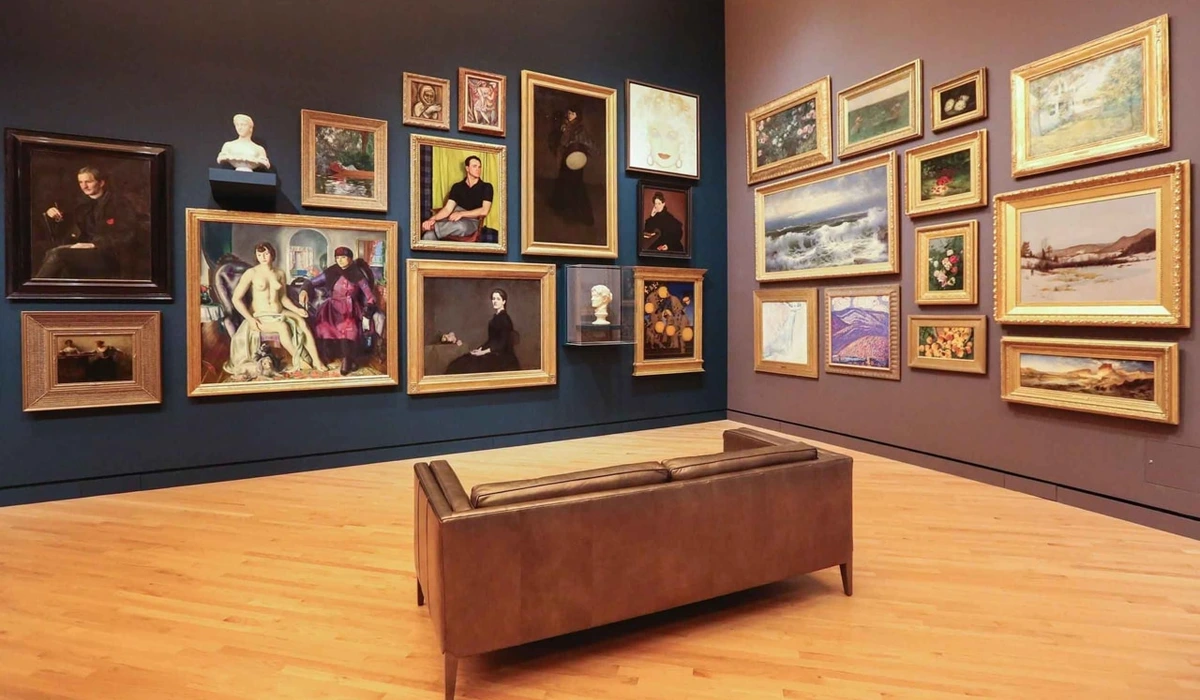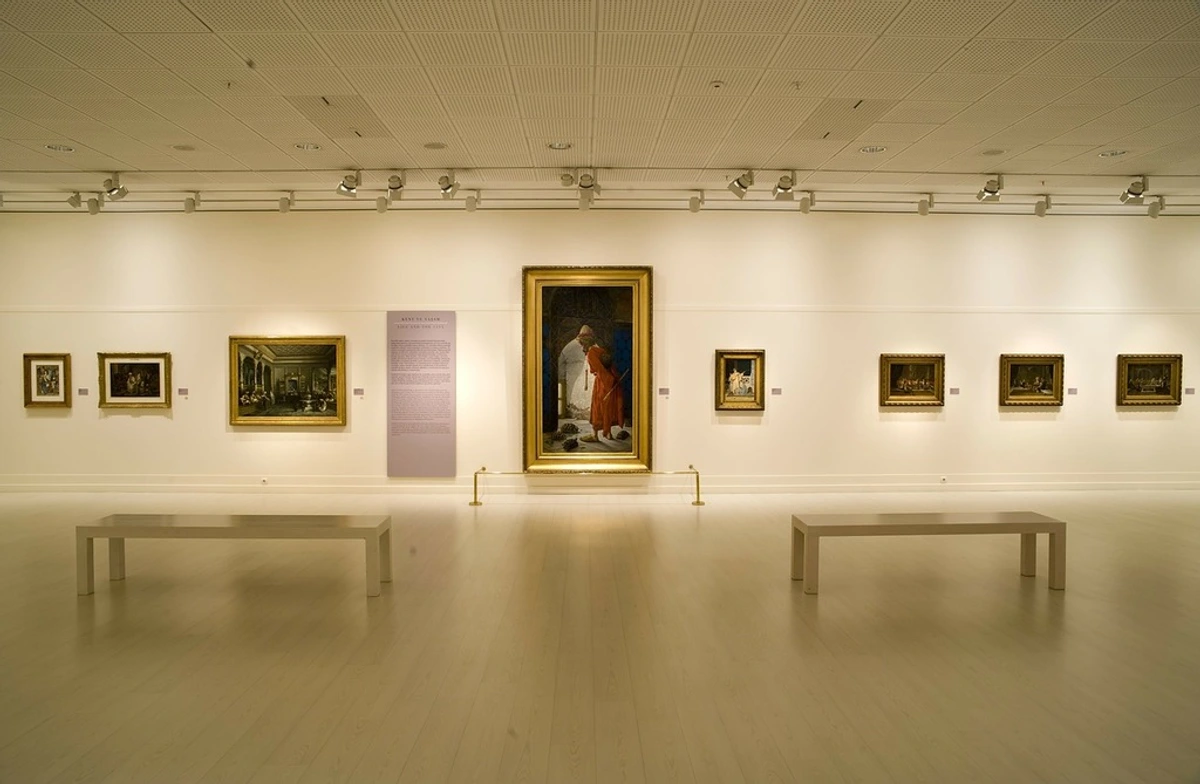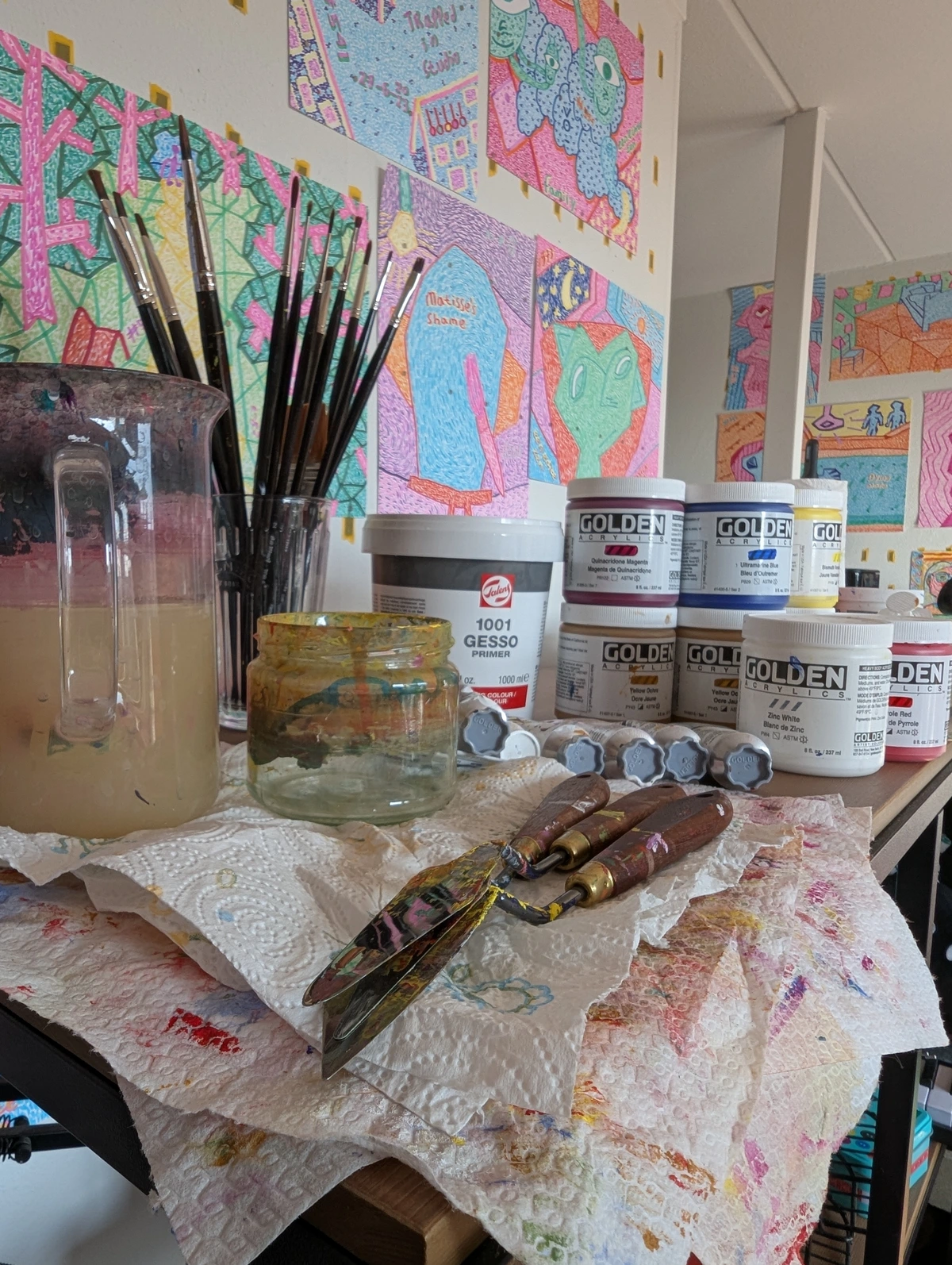
Negotiating Art Prices in Galleries: Your Extended Personal Guide
Feeling awkward about negotiating art prices in galleries? You're not alone. This extended guide shares personal insights, practical tips, and subtle humor on how to approach galleries, understand pricing, and discuss buying art with confidence.
The Awkward Dance: Negotiating Art Prices in Galleries (Yes, You Can!) - An Extended Guide
Okay, let's be honest. Walking into a fancy art gallery can feel a bit intimidating, right? All that quiet, the pristine white walls, the hushed tones... and then you see a price tag that makes your eyes water. The thought of actually negotiating that price? For many of us, it feels about as comfortable as performing interpretive dance in a crowded elevator. I mean, who does that? It feels... wrong.
I get it. We're conditioned to see price tags as fixed, especially in places that feel a bit... sacred. Like a museum, but where you could potentially take something home. But here's a little secret, whispered from one art lover to another: negotiating art prices in galleries is absolutely a thing. It's not like haggling over a rug in a bazaar (though there's an art to that too, I'm sure, probably involving more shouting). It's more of a nuanced conversation, a dance, if you will, that acknowledges the value of the art, the needs of the gallery and artist, and your genuine desire to bring a piece into your life. It's less about being cheap and more about finding a way for everyone to win.
So, let's ditch the awkwardness and learn the steps to this particular dance. It's less about being cheap and more about being informed, respectful, and ready to engage. And maybe, just maybe, saving a few pennies along the way.
Why is Negotiation Even Possible in a Gallery?
Unlike a retail store selling mass-produced goods, a gallery is selling unique or limited-edition items. The price isn't just the cost of materials plus a standard markup. It reflects the artist's reputation, the gallery's overheads, the history of the piece (if any), and the perceived market value. It's a complex equation, and sometimes, there's a little wiggle room.
Galleries work on commission. They represent the artist and need to make a profit to keep the lights on and continue supporting their artists. Artists need to sell their work to make a living and continue creating. It's an ecosystem, and sometimes, a slight adjustment in price can make the difference between a sale happening or not, which benefits everyone involved. Think of it as greasing the wheels of the art world machine just a tiny bit.
Think of it this way: the gallery wants to sell the art, and you want to buy it. There's a shared goal! Negotiation is simply finding a price point that works for both parties. It's not a battle; it's a collaboration. Like two people trying to assemble IKEA furniture without the instructions – you're both aiming for the same outcome, even if the process feels a bit clunky at times.

Before You Even Think About the Price Tag...
Preparation is key. You wouldn't walk into a job interview without researching the company, right? Treat buying art with the same respect. This isn't just about getting a better price; it's about showing you're a serious, informed buyer who values the art and the relationship with the gallery. This builds rapport, which, trust me, is your secret weapon in this dance. I remember the first time I really dug into an artist's background before visiting a gallery – it completely changed how I saw the work and how the gallerist engaged with me. It felt less like a transaction and more like a shared passion.
- Know the Artist: Have you researched the artist? Do you know their background, their significance, their market history? Understanding their journey can give you context for the pricing. Is this a major piece from a well-established artist, or an exciting early work from someone just starting out? (Maybe check out our guide on Researching Artists: A Buyer's Guide on What to Know Before You Buy). Knowing this helps you understand the value beyond the number.
- Know the Artwork: What is the medium? Is it a unique piece or a Limited Edition Prints Explained: Your Ultimate Art Guide? What's its provenance (its history of ownership)? Is it in good condition? (Our Comprehensive Painting Care Guide: Protect Oils, Acrylics & More might offer insights into condition). Understanding the specifics of the piece itself is vital. Provenance, for instance, isn't just a fancy word; it's the story of the artwork's life before you, adding layers of context and potentially influencing value.
- Know the Gallery: Is it a major international gallery with multiple locations, a smaller, local space, or perhaps an artist-run initiative? Their pricing structures and flexibility might differ significantly. Larger, high-profile galleries often have less room to negotiate, especially for sought-after artists, while smaller or emerging galleries might be more flexible to make a sale and support their artists. Different types of galleries operate with different business models and missions. A commercial gallery's primary goal is sales, while a non-profit might prioritize placing work in significant collections or supporting experimental artists, which can subtly shift their negotiation approach. (Curious about galleries? Read What is an Art Gallery? Your Engaging & Ultimate Guide).
- Know Your Budget: This is crucial. Don't fall in love with a piece that's wildly outside your means, hoping for a miracle discount. Have a realistic range in mind. It saves everyone time and potential disappointment. If you're just starting out, maybe our tips on Start an Art Collection on a Budget | Affordable Tips for Beginners could help set expectations.
Knowing these things shows the gallery you're a serious, informed buyer, not just a window shopper trying to get a deal. It signals respect for their time and the artist's work. And honestly, it makes you feel more confident, which is half the battle.
The Conversation: How to Approach the Gallery
Forget aggressive tactics. This isn't a car dealership. The goal is a respectful dialogue. You're building a relationship, not winning a fight. I always try to remember that the person I'm talking to is likely passionate about art too. We're on the same team, in a way.
- Express Genuine Interest: Start by talking about the art itself. Why do you love it? What does it mean to you? Connect with the piece and share that connection with the gallery representative. This isn't just strategy; it's the heart of buying art. Talk about the colors, the composition, how it makes you feel. (Maybe our guide on Elements of Art Explained: Your Ultimate Guide to Seeing Like an Artist could help you find the words). This initial connection is vital; it shows your interest is rooted in appreciation, not just price.
- Ask Questions: Inquire about the piece, the artist's process, the history. This shows engagement and helps you gather more information. Ask about the artist's inspiration, the techniques used, or where the piece has been exhibited before. It shows you've done your homework (from the previous step!) and are truly invested.
- Mention Your Interest in Purchasing: Once you've established a connection and shown serious interest, you can express your desire to potentially purchase the piece. This is the natural next step after a genuine conversation about the art.
- Initiate the Price Discussion Gently: Instead of a blunt offer, you might say something like, "I'm very interested in this piece. Is there any flexibility on the price?" or "I'm working with a specific budget, and I'd love to know if there's a possibility of discussing the price." This opens the door without being demanding. The gallery might immediately say the price is firm, or they might invite further discussion. It's a soft opening, like testing the water with your toe instead of diving headfirst.

Making an Offer (If Invited)
If the gallery indicates there's room for discussion, you might be asked to make an offer. This is where your preparation really pays off. Remember, the gallery isn't just trying to make money; they might also be motivated by placing the work in a good collection, supporting a new collector, or simply moving inventory that's been sitting for a while. Understanding their potential motivations can inform your approach.
- Be Realistic: Don't offer half the asking price unless there's a very clear, justifiable reason (e.g., significant damage, which you'd have discussed already). A typical negotiation range might be 5-15%, sometimes up to 20% for higher-priced works, pieces that have been on the market for a while, or if you're a repeat buyer. This is a general guideline, and the actual flexibility depends heavily on the factors discussed later. Your offer should reflect your research into the artist's market and the specific piece.
- Justify (Subtly): You don't need a long list of reasons, but you could mention your budget constraints or your long-term interest in collecting the artist's work. If you're buying multiple pieces, you have stronger leverage to ask for a package deal. "I'm very interested in this piece and also [another piece]. Would there be any flexibility if I were to acquire both?" is a perfectly reasonable question.
- Consider Payment Terms: Sometimes, flexibility isn't just in the price but in the payment plan. Could you pay in installments over a few months? This can be a great way to acquire a piece that's slightly above your immediate budget, and it shows the gallery you're committed.
- Explore Other Inclusions: Price isn't the only thing you can discuss. Could the gallery include framing? What about delivery or installation? For higher-value pieces, these services can add up, and getting them included can be a form of negotiation that doesn't directly lower the sticker price but adds value for you.
- Be Patient: Negotiation can take time. The gallerist might need to consult with the artist or the gallery owner. Don't expect an immediate answer, especially for a significant piece or a larger discount request. Patience shows you're serious and respectful of their process.
- Be Prepared to Walk Away: This is the hardest part! If the gallery can't meet your price, be polite and thank them for their time. Don't push or act disappointed. Maintain a good relationship with the gallery; you might buy from them in the future, or they might contact you about other pieces. There will be other pieces, other artists. (Finding art you love is a journey, after all. Maybe explore Where to Find Affordable Original Art Online Without Sacrificing Quality or Buy Art for Less: The Ultimate Guide to Affordable Collecting). Walking away gracefully shows you're serious about your budget and not just playing games.
What Factors Influence Negotiation?
Several things can affect how much wiggle room there is. Understanding these can help you gauge the potential for negotiation before you even start the conversation. It's like knowing the weather forecast before planning your dance. What makes one piece or one gallery more flexible than another?
- The Artist's Status: A blue-chip artist with a waiting list? Probably no negotiation. An emerging artist? More likely. Galleries representing emerging artists are often keen to make sales to build the artist's market and reputation. (Learn about How to Spot & Buy Art from Emerging Artists: A Collector's Guide).
- The Artwork Itself: Is it a major, sought-after piece (like a signature work from a key series) or a smaller study or print? Major works typically have less flexibility.
- How Long It's Been Available: A piece that's been on the market for a while might have more flexibility. Galleries have overheads and need to move inventory. Sometimes, a piece just hasn't found the right buyer yet, and they might be more open to discussion.
- Gallery's Needs: Are they trying to close sales for a specific exhibition, meet end-of-year targets, or perhaps clear space for new inventory? Sometimes, timing can play a role. I once heard about a gallery being more flexible right before a major art fair to free up capital, though I've never personally timed it that perfectly! Galleries also have motivations beyond just immediate profit, like placing work in a prestigious collection or supporting a new collector's journey.
- Your Relationship: Are you a known collector with a history of buying from the gallery or the artist, or a first-time buyer? Building a relationship with a gallery can open doors (and sometimes lead to better terms or being offered pieces before they hit the market). Galleries value loyal clients. This is perhaps one of the most powerful, long-term negotiation tools you have – becoming a valued patron.
- Market Conditions: The overall health of the art market can also play a role, though this is a more complex factor.
When NOT to Negotiate
Just as important as knowing when you can negotiate is knowing when you probably shouldn't. Respect is key in the art world, and some situations are simply not appropriate for price discussions.
- Opening Nights: These are celebratory events for the artist and gallery. It's generally considered poor form to start negotiating prices when everyone is there to appreciate the work and the artist's achievement. Focus on congratulating the artist and talking about the work.
- Very Low-Priced Works: If a piece is already priced very affordably (say, under $1000, depending on the market and artist), asking for a discount might be seen as disrespectful to the artist's time, effort, and materials. It's like asking for a discount on a coffee – just... don't.
- Limited Edition Prints with Fixed Pricing: Some galleries have very clear, non-negotiable pricing for editions, especially if they are selling quickly or are part of a highly sought-after release. The value is often tied to the edition number and the artist's market.
- If You're Not Serious: Don't waste the gallery's time (and your own) if you're just curious about the price floor. Only negotiate if you are genuinely prepared and able to purchase the piece at a price you can afford. Leading someone through a negotiation process when you have no intention of buying is simply disrespectful of their time and effort.
My Personal Take? It's About Connection
For me, buying art is deeply personal. It's about finding something that resonates, that speaks to you, that you want to live with. The negotiation, when it happens, is just part of the process of bringing that piece into your world. It's a conversation about value – not just monetary, but the value it holds for you. It's also a conversation that acknowledges the value the artist and gallery bring.
I remember the first time I even considered asking about a price. My palms were sweating! I felt like I was breaking some unwritten rule. But the gallerist was kind, we talked about the artist's process (which reminded me a bit of my own journey, you know, the messy studio, the trial and error - like trying to figure out How to Make Abstract Art: Your Ultimate & Engaging Guide or wrestling with Elements of Art Explained: Your Ultimate Guide to Seeing Like an Artist), and it turned out there was a little room. It wasn't a huge discount, but it felt like we'd reached an understanding, a shared appreciation for the piece that went beyond the tag. It felt less like a transaction and more like a shared moment in the art's journey.
It's a human interaction. Be polite, be informed, and be genuine. The worst they can say is no. And hey, if you're looking for art to connect with, you can always browse my own work or learn about my artist's journey. Maybe you'll find a piece you love so much, the price negotiation feels less like a dance and more like a joyful leap.

FAQ: Still Feeling Shy?
Here are a few quick answers to common worries:
Q: Is it rude to ask for a discount? A: Generally, no, not if you do it politely and respectfully after showing genuine interest. It's part of the art market culture, especially in the primary market (buying from a gallery representing the artist). The secondary market (auctions, resale) has its own dynamics, often involving bidding rather than direct negotiation. Understanding the difference between the Navigating the Secondary Art Market: An Artist's Guide to Auctions & Resale and the primary market is key.
Q: How much should I offer? A: Start small, maybe 10-15% below the asking price, depending on your research and the factors discussed above. Be prepared for them to counter-offer. It's a negotiation, remember? It's a back-and-forth. The 5-15% (or up to 20%) is a guideline, not a rule, and depends heavily on the specific piece, artist, and gallery.
Q: What if they say no? A: Thank them for their time and move on. Don't push or act disappointed. Maintain a good relationship with the gallery; you might buy from them in the future. Respect their position.
Q: Can I negotiate at art fairs too? A: Yes, negotiation is common at art fairs, often even more so than in galleries, especially towards the end of the fair when galleries are looking to make final sales. (Check out our tips for Visiting Art Fairs: Your Essential (and Slightly Less Overwhelming) Guide).
Q: Does paying cash help? A: Sometimes, yes. It can simplify the transaction for the gallery, potentially saving them credit card fees, which might give you a little more leverage. But don't assume it guarantees a discount.
Q: What if I'm interested but not ready to buy right now? A: Be honest! Express your strong interest, explain your situation (e.g., needing time to consider, saving up), and ask if they can keep you informed about the artist or similar pieces. Ask if they offer payment plans. Maintaining contact shows you're serious for the long term.
Conclusion
Negotiating art prices in galleries doesn't have to be a scary or awkward experience. View it as a conversation, a way to engage more deeply with the gallery and the art world. It's a dance, yes, but one where you and the gallery are partners, not adversaries. Do your homework, be polite, be realistic, and be genuine in your appreciation for the artwork. You might be surprised at the outcome. And even if you don't get a discount, you'll gain valuable experience, build confidence, and maybe even make a new connection in the art world for the next time you fall in love with a piece. Happy collecting, and happy dancing!




